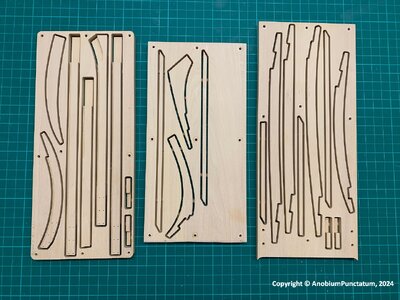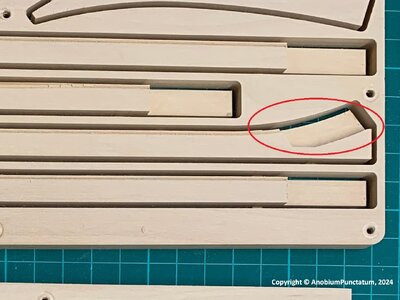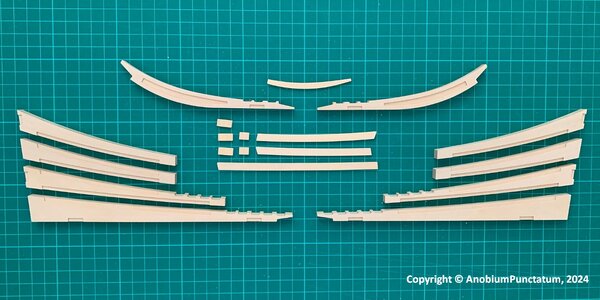I am currently milling the components for the backbone of my ship sloop.
The photo shows my small CNC. Not in the picture is the control unit for the milling machine.

I am using a 16mm birch multiplex board from the DIY store as a support plate. Before starting the milling work, the working area of the milling machine must be milled flat to ensure that the boards are aligned parallel to the milling machine later on. The holes that can be seen are used to attach the boards to the support plate. I chose this arrangement based on my experience of milling the first components for my Alert last year.
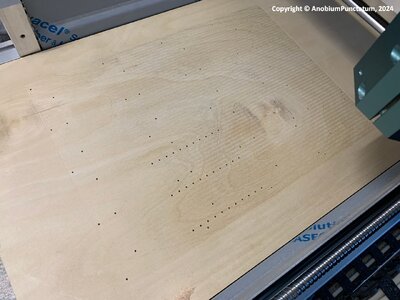
Milling from two sides is a particular challenge. On the keel, for example, the rabbet and chocks are milled from both sides. In addition, each milling cutter only has a limited milling depth (with a diameter of 0.5mm, for example, it is only 3mm). In order to mill a thicker board, it is necessary to mill from both sides. A forced centering is essential for these milling operations.
The first step is to prepare the board for the components.
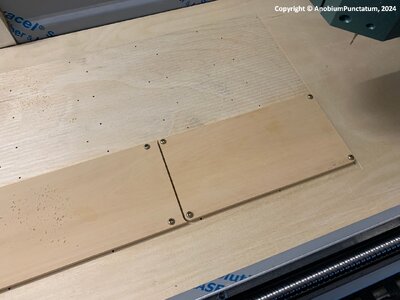
I use an MDF board for the forced centering, as the material is available cheaply at DIY stores. A precisely fitting recess is milled into this for the prepared board.
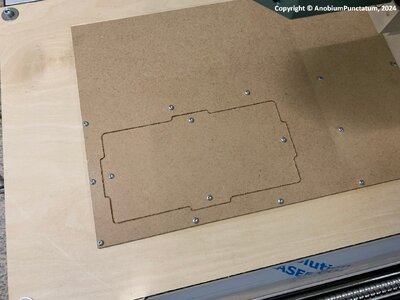
The board is then screwed into the recess and the back is milled. Now the importance of the holes in the support plate will probably become clear. The next picture shows the board after milling the required recesses.
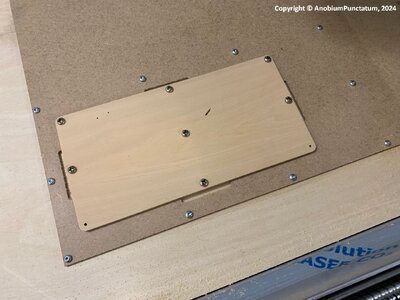
The board is then turned over and the cut-outs milled first. Finally, the components are "cut out".
The last two pictures show the components of the Knee of the Head from the front and the back with the retaining bars.
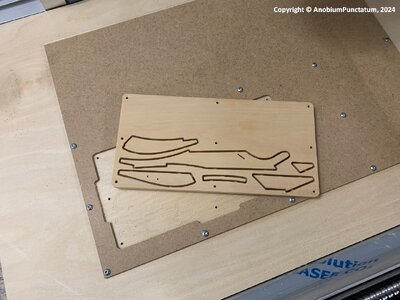
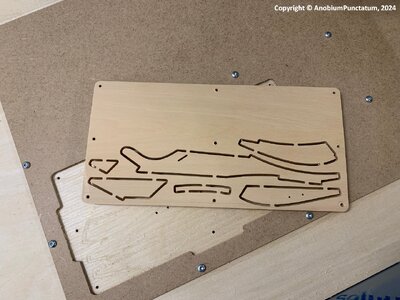
Over the next few weeks, all the components for the backbone of HM Sloop Fly will be milled before assembly begins.














